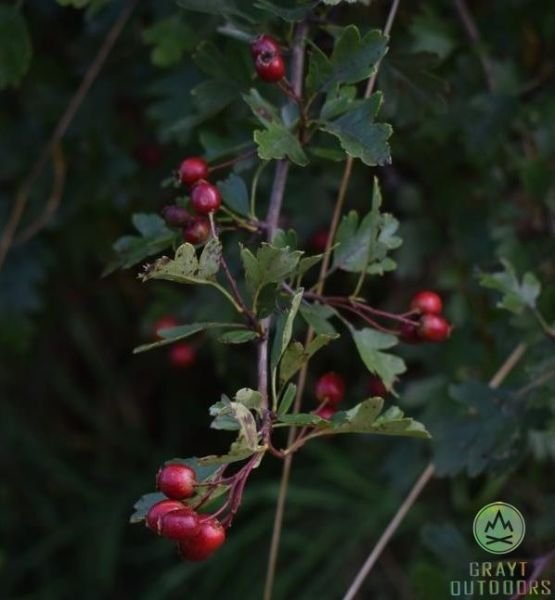Mobile Viewing / Viewing on a small screen
Viewing this website on smaller screens will disable the table information. To view this data please view the site on a desktop computer or rotate your device to landscape.
Hawthorn
(Crataegus)

Summary
| Order | Family | Genus |
|---|---|---|
| Rosales
(Rosales) |
The Rose Family
(Rosaceae) |
Hawthorn
(Crataegus) |
Overview
Hawthorn is a dense, thorny, shrub or small tree. There are between 100-200 species, of which, only 2 are native to the UK; Common Hawthorn, and Midland Hawthorn. Common Hawthorn is found throughout the UK. Midland Hawthorn, as the name suggests, is found in the midlands and south-east of England. There have been other species introduce but these are not as widespread.
The Latin name Crataegus comes from Kratas "strength" and akis "sharp", referring to the thorns of the tree. The common English name is made up from "haw" which is an old-English name for hedge and thorn for obvious reasons.
Hawthorns have distinct leaves with deep lobes, along with white or pink flowers. The 2 most common species have red fruits or 'haws' that are edible and contain high levels of pectin. This makes them useful for creation of jams and/or fruit leathers.
Traditionally Hawthorn was used for ribs of small boats, walking sticks, fence posts and alike. It is used in fine works such as veneers and engraving nowadays.
Bushcraft
Hawthorn is edible and burns well with a high heat output. Due to its high availability and easily recognisable features it is an important tree to know and utilise.
Click below for more information of individual species at Plants For A Future website (PFAF.org)
General Info
| Description | Data | Notes |
|---|---|---|
| Season | Deciduous | Flowers in May. Fruits August to October. |
| Edible | Yes | See below. |
| Uses | Medium | See below. |
| Burnability | Very Good | Slow burning and good heat output. |
| Hardness Rating | Unknown | Rough scale of hardness from 0 - 100
(Zero being the softest wood and one hundred being the hardest) |
Gallery and Identification
Features common to majority of species:
Size - Species variation - 8m to 15m (Arnold Hawthorne (Crataegus arnoldiana) to Common Hawthorne (Crataegus monogyna))
Bark - Heavily fissured. Varies between grey/brown/green in colour. Often has lichen growing on it.
Leaves - Deeply lobed. Size varies between 4cm to 6.5cm long between species.
Reproductive Parts - White flowers most common but sometimes pink. 5 petals and hermaphrodite. Spherical or ovate fruit. Red/maroon in colour. Varies in size from 0.5cm to 2.5cm between species and contain between 1 and 5 seeds. (often clumped together to appear as 1 seed).
Distribution - Most common species found all over the UK.
Surroundings - Hedgerows, woods, roadsides, waste ground
Misc - Thorns up to 5cm long. Look out for Hawthorn Shield Bug which feeds on the leaves and fruit.
Resources
- Firewood - Known as forgers' wood because it burns hot
- Charcoal
Food
- Haws - Can be eaten straight from the tree or made into jams, leathers, jelly etc due to high pectin content. Can be mixed with other fruit to improve flavour.
- Leaves - young leaves are edible.














